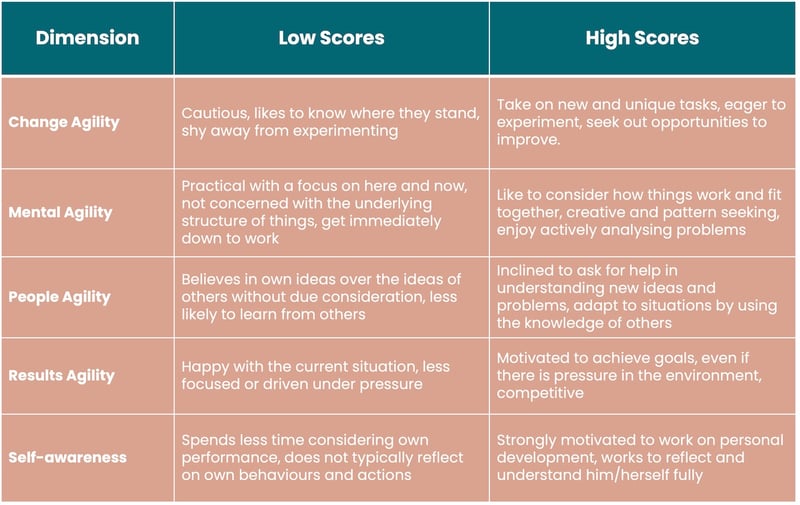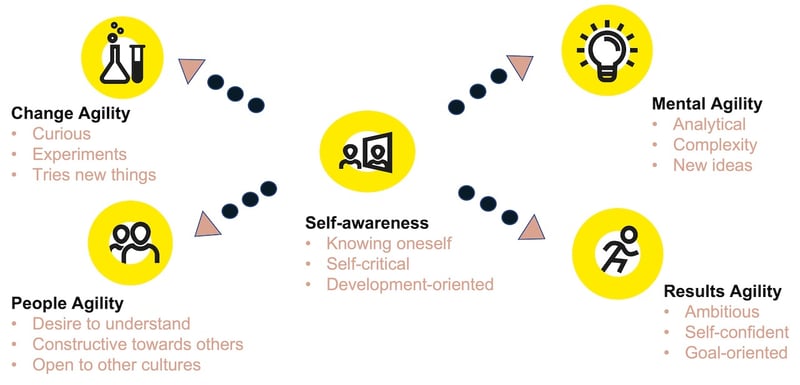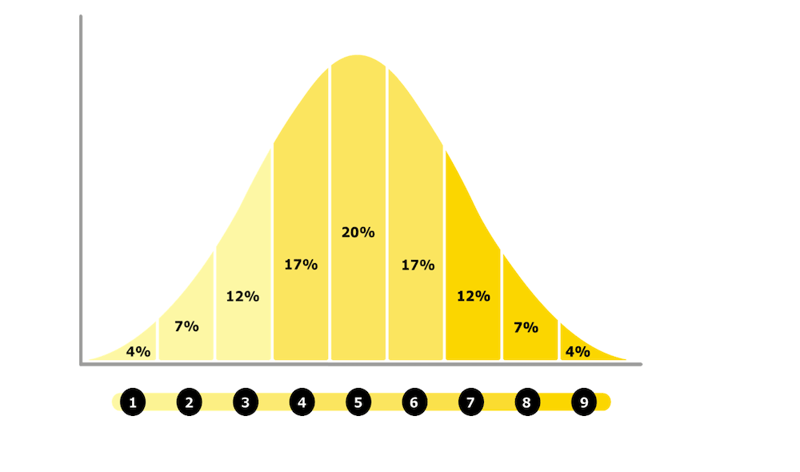Understanding your Learning Agility Report
Learning Agility is the ability to develop new effective behaviour in the face of new experiences. This includes learning new skills, and also unlearning less effective behaviours which you may have relied on in the past. How quickly can and do you want to participate in the inevitable changes in your position? Can you be an ambassador for change within your department or your organisation?
Recap – What is Learning Agility?
Learning Agility consists of five dimensions: People Agility, Mental Agility, Change Agility, Results Agility and Self-Awareness. People rarely score high on all five agilities, but typically display different styles, with some dimensions scoring lower and others higher.

The Special Role of Self-Awareness
Self-awareness plays a special role in shaping your Learning Agility. Because it measures your ability to reflect on your own behaviour, criticise your own performance when necessary, and recognise your development needs. It can have either a beneficial or a limiting effect on your overall score. This is referred to as the Self-awareness Factor in the report, which ranges from -1.5 to +1.5.

Understanding the Scoring of your Learning Agility Report
All results found within your Learning Agility report are based on a scale of 1-9 (Stanine scale). Your raw data is compared to the South African norm group, and your numerical score reflects how agile you are in relation to the typical South African.
Scores of 1 to 3 are typically considered below average. Scores of 4 to 6 are considered to be average in relation to the norm. Scores of 7 to 9 are above average. When reading through your own results, keep in mind that lower scores are not necessarily negative; what matters is whether your level of agility is suited to your current position.

Understanding the Structure of your Learning Agility Report
Your Learning Agility Indicator report consists of three sections:
-
An overview of your overall Learning Agility score, Self-awareness factor and a summary of your top strengths.
-
A detailed breakdown of your Learning Agility results for each of the five dimensions.
-
Detailed information per Learning Agility dimension, along with practical development advice.
1. Overview of the Overall Learning Agility
In this section, your overall Learning agility score is provided along with your Self-awareness factor.
Next, your Learning Agility DNA is presented graphically. This illustrates how your personality results (“Can”) and motivations profile (“Want”) contribute to your overall Learning Agility score. The overall score is not a simple average of the “Can” and “Want” scores, as the Self-awareness factor is also included in the calculation, either facilitating (increasing) or constraining (limiting) the overall score. The remainder of the summary on page 5 is devoted to highlighting your Learning Agility strengths, which you can leverage upon to boost your agility in various contexts.
2. Score Profile
Page 6 is a breakdown of your Learning Agility score per dimension. Each agility is provided along with a brief definition, and thereafter your numerical score. It is important to not only focus on your single score per dimension, but to review the following detailed pages to understand how your “Can” and “Want” DNA contribute to your result.
3. Detailed information
In this section of the report, you will see detailed information per Learning Agility dimension, including:
-
A standard definition for the dimension, describing what a high score looks like in practice
-
Your score on the Stanine scale
-
Your DNA for that dimension (“Can” and “Want”)
-
Practical development tips.
These practical development tips are the best place to start, if you would like to develop any specific agility.
If you would like to know more

Author
Lumenii's team of expert psychologists regularly collaborate to share their ideas and knowledge. The latest case studies, thought leadership, and research.